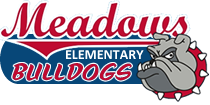Academic Support
Page Navigation
- Meadows Elementary
- Speech
-
Speech
-
The ability to communicate successfully occurs along a continuum.
- Language: A language impairment is defined as the delayed or disordered acquisition, comprehension or expression of language. Differences from normal language which have an impact on educational/developmental progress on pragmatic, semantic, syntactic and/or morphological functioning are considered as well as social/emotional and vocational functioning.
- Articulation: An articulation impairment is defined as a speech abnormality which is characterized by omission or incorrect production of speech sounds due to faulty placement, timing, direction, pressure, speed or integration of the articulators. Speech sound production, phonological development, overall intelligibility, and impact on educational/developmental progress and social/emotional and vocational functioning is considered.
- Fluency: A fluency impairment is defined as a disturbance to the normal fluency and timing of speech, characterized by one or more of the following: (a) sound and syllable repetitions, (b) sound prolongations, (c) blocks and/or (d) excess tension in the speech musculature. Associated non-vocal behaviors are also considered as well as the impact of the fluency impairment on the educational/developmental progress and social/emotional and vocational functioning of the student.
- Voice: A voice impairment is defined as any deviation in pitch, intensity, quality or other basic vocal attribute which interferes with communication, draws unfavorable attention, adversely affects the speaker or listener and is inappropriate to the age or gender of the individual.


